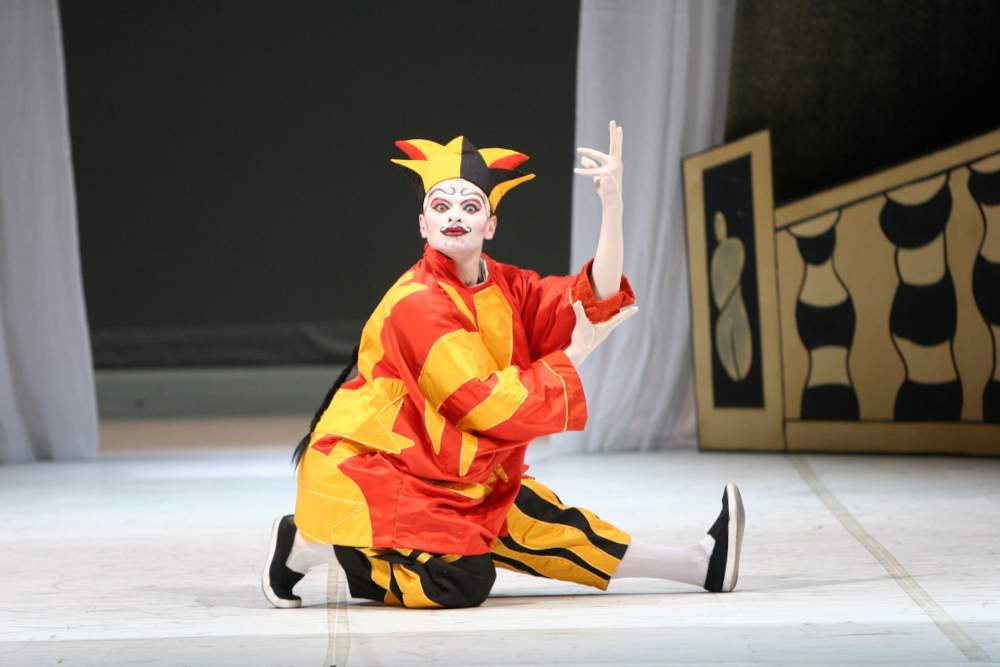An exhibition at Palazzo Magnani on puppets and the avant-garde, with works by Picasso, Depero and Klee
From November 17, 2023 to March 17, 2024, Palazzo Magnani in Reggio Emilia presents the exhibition Puppets and the Avant-Garde. Picasso, Depero, Klee, Sarzi, followed by James Bradburne, member of the Scientific Committee of the Palazzo Magnani Foundation and founder of CIRCI - International Center for Research on the Culture of Childhood.
The exhibition is developed around the concept of the"fourth wall," or the capacity for emotional involvement of a well-crafted performance, capable of immersing the viewer in the story being staged. When a puppet breaks the fourth wall, it wins the audience’s trust, giving the show the power to blur that division between stage and world, between art and life.
Rather than treating puppets as mere children’s toys, artists looked to creative play as a source of aesthetic inspiration with the goal of seeking new modes of visual expression. While some artists saw the potential of puppets to imagine a better world, satirists used transgressive and biting performances to attack the political establishment. Targeting adult audiences and drawing on a strong tradition of political satire from “figure theater,” modern artists used puppets to criticize political and social conditions.
Visitors to the exhibition at Palazzo Magnani will be greeted by the life-size costumes designed by Pablo Picasso for Parade, a choreographed ballet that Sergei Djaghilev’s Ballets russes staged in Paris in 1917. Also on display are a crowd of “high and low” puppets, manipulated from below with hands or through a stick from above, from the oldest specimens, such as the Punchinellos or Harlequins of the Commedia dell’Arte, to those of Otello Sarzi, an adopted Reggio Emilia native, made from salvaged materials.
So many Italian Futurist artists such as Ettore Prampolini and Fortunato Depero were fascinated by the way objects could be brought to life: puppets expressed amachinic aesthetic, were abstract, and, after the devastation of World War I, captured the grim reality of amputated and maimed returning soldiers, as illustrated by Sironi, Carrà, and De Chirico.
Thanks to Oskar Schlemmer ’s rediscovery of Kleist’s classic On the Puppet Theater (1810), puppets, toys and children’s games became a central element of Bauhaus practice in 1920s Weimar: Paul Klee, Andor Weininger, Lothar Schreyer, Sophie Täuber Arp, and Oskar Schlemmer.
The survey then shifts to theRussian avant-garde with The Puppets and the Revolution. When Lenin and his wife Natalia Krupskaya decided to combat illiteracy and educate the new Soviet citizenry, they realized that the use of puppets was the ideal, and working with leading artists, architects, and writers, figures such as El Lissitzky, Aleksandra Ekster, and Nina Efimova experimented with new forms of children’s theater.
In the late 19th century, on the wave of Orientalism, classical Javanese puppets began to appear on European stages. Austrian artist and illustrator Richard Teschner in particular developed the art of stick puppetry to a climax, which influenced artists from Paris to Moscow.
The exhibition is completed with a Tribute to Otello Sarzi and to Fellini, Strehler and Rodari, thanks to close collaboration with the Fondazione Famiglia Sarzi. Born into a tradition of puppeteers that lasted for generations, Otello was a young helper in the family’s traveling troupe, for which he saw the passage of novices who later became famous: among others, a young Federico Fellini. In November 1951 Otello began a collaboration with Gianni Rodari in Novara, making masks for children with the characters Cipollino, Atomino and others created by Rodari. From that time Othello devoted himself exclusively to puppet theater, dramatizing Alfred Jarry, Samuel Beckett and Bertolt Brecht and also making very large figures with innovative techniques.
Two fairground theaters will be set up in the ground-floor rooms to give young children a chance to try their hand at animated theater, and on weekends it will also be performed by some of Italy’s latest puppeteers.
Finally, the exhibition will be carbon neutral: the Palazzo Magnani Foundation is committed to totally offset the tons of CO2 emitted into the atmosphere for the production of the cultural activities it organizes.
For info: https://www.palazzomagnani.it/
Hours: Wednesday and Thursday from 10 a.m. to 1 p.m. and 3 p.m. to 6 p.m.; Friday, Saturday and Sunday and holidays from 10 a.m. to 7 p.m.
Tickets: full 12 euros, reduced 10 euros; 8 euros for students aged 19 to 26; 5 euros for kids aged 6 to 18. Free for Friends of the Palazzo Magnani Foundation, children under 6, accompanying persons with disabilities, registered journalists with ID, members of the Peggy Guggenheim Collection, Friends of Palazzo Strozzi, Friends of Camera, ICOM members.
Image: The Chinese Conjurer Scenes and costumes by Pablo for the ballet Parade, first performed in 1917 in Paris. Costume reconstructed by Anna Biagiotti in 2007 for the performance at the Teatro dell’Opera di Roma. Credit Teatro dell’Opera di Roma, Historical Archives.
 |
| An exhibition at Palazzo Magnani on puppets and the avant-garde, with works by Picasso, Depero and Klee |
Warning: the translation into English of the original Italian article was created using automatic tools. We undertake to review all articles, but we do not guarantee the total absence of inaccuracies in the translation due to the program. You can find the original by clicking on the ITA button. If you find any mistake,please contact us.





























